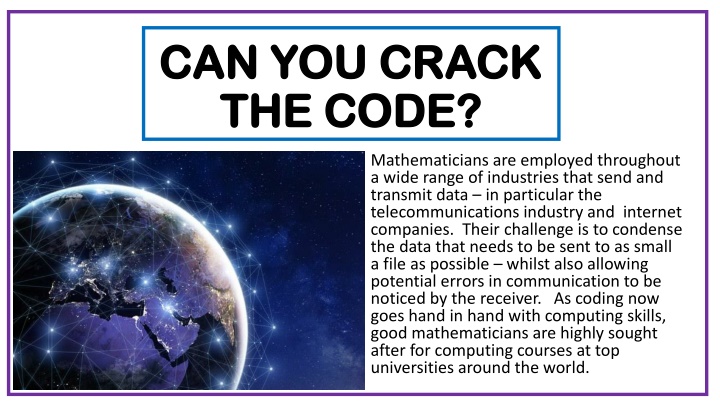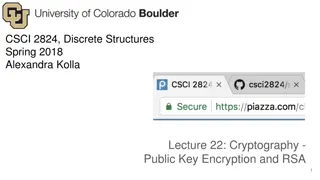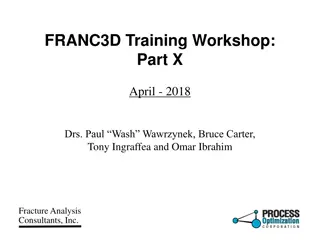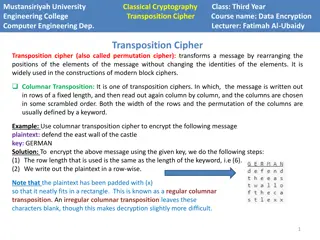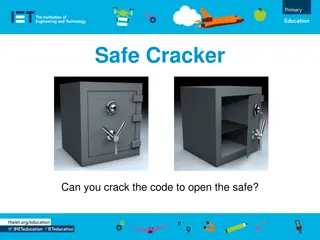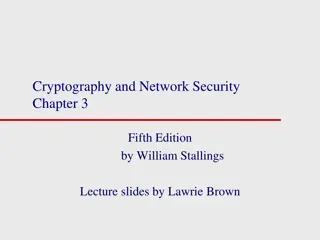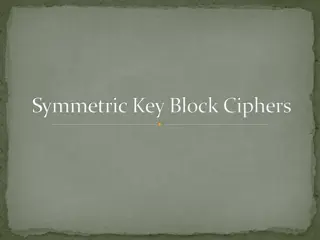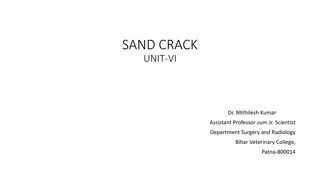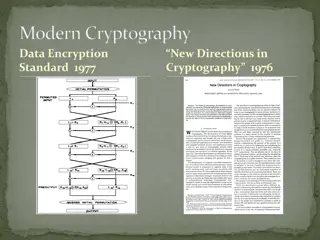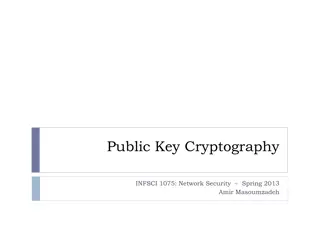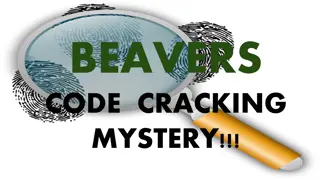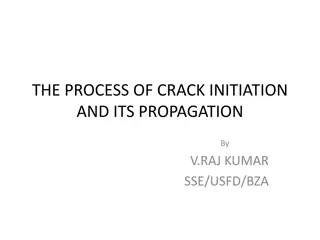Crack the Code: A Journey into Transposition Ciphers
Mathematicians play a crucial role in industries like telecommunications and internet companies by condensing data and ensuring error detection. Transposition ciphers, like the Scytale used by Romans, offer a challenging way to encrypt messages. Test your skills with code-breaking challenges and explore the fascinating world of cryptography.
Download Presentation

Please find below an Image/Link to download the presentation.
The content on the website is provided AS IS for your information and personal use only. It may not be sold, licensed, or shared on other websites without obtaining consent from the author.If you encounter any issues during the download, it is possible that the publisher has removed the file from their server.
You are allowed to download the files provided on this website for personal or commercial use, subject to the condition that they are used lawfully. All files are the property of their respective owners.
The content on the website is provided AS IS for your information and personal use only. It may not be sold, licensed, or shared on other websites without obtaining consent from the author.
E N D
Presentation Transcript
CAN YOU CRACK CAN YOU CRACK THE CODE? THE CODE? Mathematicians are employed throughout a wide range of industries that send and transmit data in particular the telecommunications industry and internet companies. Their challenge is to condense the data that needs to be sent to as small a file as possible whilst also allowing potential errors in communication to be noticed by the receiver. As coding now goes hand in hand with computing skills, good mathematicians are highly sought after for computing courses at top universities around the world.
Transposition Ciphers Transposition Ciphers Transposition Ciphers are based on a simple idea but are more difficult to crack than codes like the Caesar shift. A transposition means that the letters of the code are simply rearranged into a different order. YOUR TURN Try and solve: For example, ICBKAOREMDERAEAA, can be rearranged into rows of length 4 to give: TIOICCBKTHSRFUORIEIAEFLDENSSMDITEAGT (make 4 rows of length 9) WTFRUELEHQRHIOSADUITUEASUQRPSGSAD (make 3 rows of length 11) The message is then read from down the columns I am a codebreaker. Try this one without instructions: YRORITOEDENAUAEAGRACBRSQ VOCABULARY Transposition The act of reversing the order or place of. In music, playing in a different key from the key intended; moving the pitch of a piece of music upwards or downwards. Remember to send your solutions to me to receive your next code.
SCYTALE SCYTALE Another transposition Cipher used by the Romans was called the Scytale. This involved putting a message on a strip of paper that could only be read when wrapped around a rod of a given length. An example is given below: A scytale consists of a cylinder with a strip of parchment wound around it on which is written a message. The recipient uses a rod of the same diameter on which the parchment is wrapped to read the message. It has the advantage of being fast and not prone to mistakes. The Ancient Greeks, are said to have used this cipher to communicate during military campaigns.
JUST FOR FUN! I am taken from a mine, shut up in a wooden case, from which I am never released, and yet I am used by almost everybody. TRY ONE YOURSELF! Have a go at making your own Scytale and try it out on a family member. You could use a can of pop, toilet roll tube etc as your baton. Send me a picture if you do! If you are a confident codebreaker have a go at these online challenges: Follow this QR code to a list of letters which hold the solution to this riddle. http://ibmathsresources.com/code-challenge/ The solution to the first code gives you the password to access the next puzzle, there are 5 to solve in total in each set. Let me know how far you get take a photo and email me! Can you crack the code?
